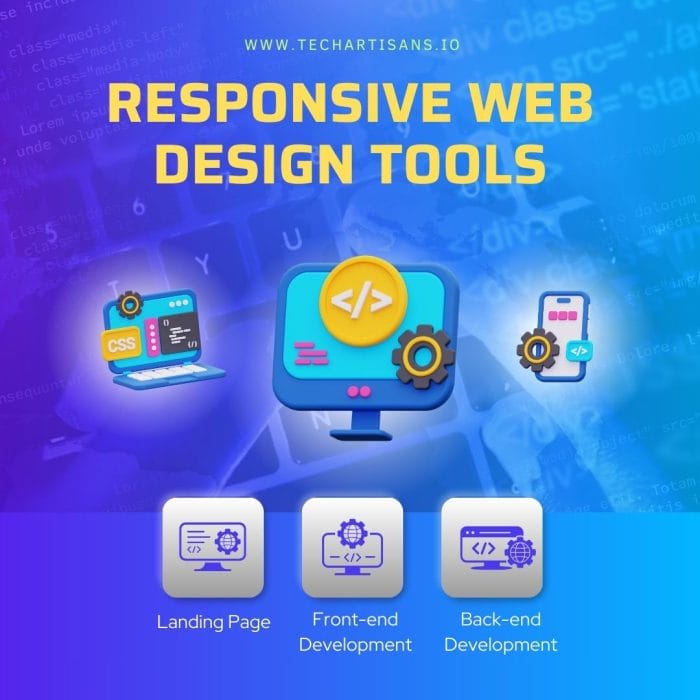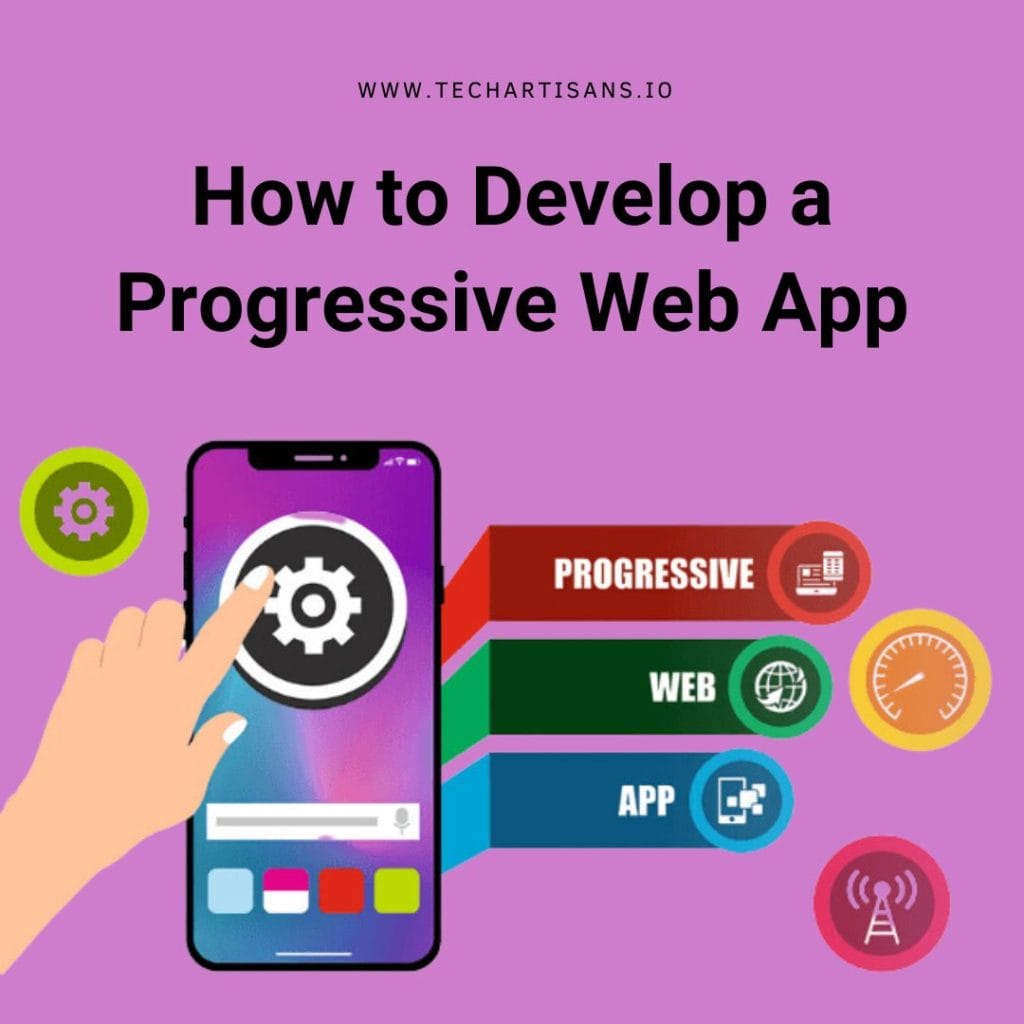In the ever-expanding digital landscape, a robust online presence is vital for businesses, big and small. One key to this is Responsive Web Design (RWD), an essential tool in ensuring your website is accessible and user-friendly on any device. Responsive Web Design Tools and Responsive Design Frameworks allow your site to automatically adjust to different screen sizes, from desktops to smartphones, providing a seamless user experience. Embracing RWD boosts your digital visibility and enhances customer engagement, propelling your business to new heights.
The Concept of Responsive Web Design
Responsive Web Design (RWD) is a core component of modern web development. Simply, it refers to designing websites so that their layout and content respond or adapt based on the device on which they’re viewed. Whether your customers use a desktop, laptop, tablet, or smartphone, a website with RWD will adjust to fit the screen perfectly.
Significance of RWD In Today’s Web Environment
Responsive Web Design is more crucial than ever in the current web environment, where users access the web using various devices with varying screen sizes. The primary goal is to provide a unified and seamless user experience irrespective of the device used. A responsive website means no unnecessary resizing, panning, or scrolling, ensuring your website is user-friendly. Furthermore, search engines like Google prioritize responsive websites in their search results, meaning RWD is critical for SEO. As such, Responsive Web Design isn’t just a luxury but a necessity in today’s digital landscape. Businesses can use Responsive Web Design Tools and Responsive Design Frameworks to ensure their online presence meets these modern demands.
Essential Features of Responsive Web Design Tools
To make the most of Responsive Web Design, it’s crucial to understand the features of the tools that make it possible. Let’s dive into the essential characteristics that Responsive Web Design Tools should possess to render an efficient and user-friendly website.
HTML5 for Structure
HTML5 is the backbone of any web page, providing the necessary structure. In Responsive Web Design, HTML5 helps ensure that the website’s content is effectively organized and easily accessible across various devices. It allows for more descriptive tags, improving the website’s readability and SEO.
CSS3 for Presentation
CSS3, or Cascading Style Sheets, is responsible for the presentation aspect of a web page. It dictates the layout, colors, fonts, and animations. With CSS3, designers can create a flexible design for various screen sizes, ensuring a consistent look and feel irrespective of the device used. Features like media queries, flexbox, and grid systems offer even greater control over the layout, making CSS3 invaluable in Responsive Web Design.
Media Queries for Dynamic Adjustment
Media queries, a feature of CSS3, are a crucial tool for implementing responsive design. They allow the page to use different CSS style rules based on the characteristics of the device the site is being viewed on, most commonly the width of the browser. A website can dynamically adjust its layout using design queries to provide an optimal viewing experience for every screen size. This functionality is key to a truly responsive design.
Top Tools for Responsive Web Design
Here, we delve into some of the best Responsive Web Design Tools available today. These tools enable businesses to create websites that deliver a seamless and engaging user experience across all devices.
Squarespace: Most Beautiful Responsive Website Design Tool
Squarespace is one of the most visually impressive responsive web design tools. Known for its wide array of stunning, customizable templates, Squarespace enables businesses to create beautiful, responsive websites without extensive technical skills. It provides sleek, modern designs that automatically adapt to fit any device screen, ensuring a consistent, user-friendly experience. Moreover, Squarespace’s intuitive drag-and-drop interface allows for easy website adjustments, facilitating quick design changes. With its focus on aesthetics and user experience, Squarespace is an excellent tool for businesses aiming to create an appealing and functional online presence.
Wix: Most Popular Site-Building Tool
Wix is a renowned name in responsive web design, offering a powerful, user-friendly platform for creating robust websites. Its popularity stems from its ease of use and versatility, enabling users with little to no technical skills to build professional-looking websites.
With Wix, you are provided with a variety of attractive templates, all of which are fully responsive to different device screens. This ensures your website maintains a consistent look and feel across various platforms, enhancing user experience.
To top it all, Wix’s drag-and-drop editor simplifies designing and customizing your website, allowing you to easily craft a unique online presence. With its comprehensive features and intuitive usability, Wix remains a top choice in responsive web design tools.
Hostinger: Best For Beginners
Hostinger emerges as the go-to choice for beginners embarking on their journey in responsive web design. It offers a simplified, user-friendly interface that makes website building a breeze, even for those who need more technical knowledge.
With Hostinger, you gain access to many professionally-designed, responsive templates. These can be easily customized to suit your business needs, ensuring your website looks fantastic on all device screens.
The platform’s highlight is its interactive, step-by-step tutorial. This guide helps novices understand the intricacies of web design, enabling them to easily create aesthetically pleasing, responsive sites.
Hostinger’s blend of accessibility, customer support, and educational resources makes it an ideal tool for beginners in responsive web design.
Bootstrap: Most Popular Frontend Framework
Bootstrap holds the distinction of being the most widely adopted front-end framework for responsive web design. With a comprehensive library of reusable components, Bootstrap makes building responsive, mobile-first websites effortless.
The strength of Bootstrap lies in its flexibility. It has CSS- and JavaScript-based design templates for typography, forms, buttons, navigation, and more. This means you can quickly set up a webpage without coding from scratch.
Additionally, Bootstrap’s grid system is a game-changer for website layouts. It automatically adjusts to accommodate various screen sizes, ensuring your site looks its best.
Bootstrap offers a powerful, user-friendly solution for those seeking to incorporate responsive design into their websites. This is why it remains a trusted choice among developers and business owners.
Web flow: Integrating Flexbox in Visual Builder
Web flow stands out in the ever-expanding world of responsive web design tools by seamlessly integrating Flexbox into its visual builder. Flexbox is a CSS layout model that allows for the efficient arrangement of elements on a page, regardless of size or order, optimizing the overall layout for different screen sizes.
With Web flow, you can visually apply these Flexbox properties, eliminating the need for elaborate coding. This visual approach to Flexbox makes it easy for business owners to understand and implement, even without in-depth technical knowledge.
Web flow’s combination of visual design tools, coupled with the power of CSS Flexbox, gives you the flexibility to easily create responsive layouts. Its intuitive interface and comprehensive feature set make Webflow a substantial choice in responsive web design.
Responsinator: Testing Tool For Device Compatibility
Responsinator is an indispensable testing tool for ensuring device compatibility in responsive web design. It offers a straightforward approach to testing your website’s layout on various popular device screens. This includes smartphones, tablets, and desktop monitors, allowing you to assess how your design adapts and reacts to different resolutions and orientations.
Notably, Responsinator stands out with its user-friendly interface. You enter your website’s URL, and the tool generates a preview of your site on various device screens. This visual presentation gives a clear snapshot of your website’s responsive behavior.
In summary, the Responsinator is a valuable tool in any business owner’s arsenal. It provides an easy and effective way to confirm that your website delivers a consistently high-quality experience on all devices. Its emphasis on visual feedback and ease of use make it a practical solution for responsive web design testing.
Imagify: Image Optimization Service
Imagify is an excellent image optimization service critical to the success of any responsive web design. It efficiently compresses images without compromising quality, ensuring your website delivers visually appealing content without slowing load times. This service particularly benefits mobile users, where bandwidth can be limited, making fast load times essential for a positive user experience.
Furthermore, Imagify offers an easy-to-use interface, making image optimization straightforward even for those without technical expertise. This accessibility makes it an invaluable tool for small and medium business owners, enabling them to improve their website’s performance and user experience with minimal effort.
Imagify is a powerful tool in responsive web design, contributing to improved site speed, enhanced user experience, and, ultimately, better engagement with your audience.
JsTips: JavaScript Tips for Responsive Features
JsTips provides a wealth of JavaScript tips and tricks, helping you add responsive features to your website. The platform is an invaluable resource for business owners seeking to enhance their sites’ functionality and responsiveness. It provides practical, easy-to-understand advice on implementing JavaScript to create dynamic, interactive web elements.
Furthermore, JsTips houses a comprehensive library of JavaScript snippets, enabling you to easily add custom functionalities to your site. This includes creating mobile-friendly navigation menus, interactive forms, and dynamic content that responds to user interactions. Regardless of your level of technical expertise, JsTips makes it possible to create an engaging, responsive site that appeals to your audience.
The Data Visualisation Catalogue: For Responsive Data Displays
The Data Visualisation Catalogue is an invaluable resource for implementing responsive data displays on your websites. It provides a comprehensive selection of data visualization methods, each clearly explaining its function and best use cases. This makes it easier for business owners to choose the right way to present their data in an impactful and user-friendly manner.
Incorporating these data visualization methods can enhance the responsiveness of your website, making complex data sets understandable and visually appealing on any device. The Catalogue’s straightforward, non-technical explanations make it accessible for business owners, regardless of technical expertise.
Craft by InVision LABS: Screen Design Tool
Craft by InVision LABS is a unique screen design tool that allows business owners to easily create and fine-tune responsive web designs. It streamlines the design process, blending the power of synchronized collaboration with the flexibility of intuitive design tools. This makes Craft a valuable asset for small to medium businesses looking to deliver high-quality, responsive websites.
Integration with common design platforms like Sketch and Adobe XD makes Craft an efficient tool for creating designs that scale seamlessly across different devices. The tool’s user-friendly approach, coupled with its powerful capabilities, make it great for non-technical users.
Boxy SVG Editor: Browser-Based Vector Graphics Tool
Boxy SVG Editor is an exceptional browser-based tool, ideal for creating and editing scalable vector graphics to enhance your responsive web design. It’s a versatile tool that enables business owners to create intricate designs without requiring a steep learning curve. With its vast library of pre-designed shapes and easy-to-use drawing tools, Boxy SVG Editor simplifies the design process, making it accessible for those without technical expertise.
Key to its appeal is its browser-based nature, which eliminates the need for tedious software installations. Additionally, its compatibility with all major browsers ensures a smooth design experience. The SVG designs created are scalable, meaning they maintain quality on screens of any size – a crucial factor in responsive web design. Essentially, Boxy SVG Editor is a practical and user-friendly tool that empowers business owners to create visually appealing, responsive websites.
UX Pin: Advanced Prototyping and Design
UX Pin is an advanced prototyping and design tool essential for crafting responsive web designs. It offers a range of high-fidelity design features that allow business owners to create realistic prototypes of their websites, effectively visualizing how their plans will function across different devices.
Its robust suite of interactive elements and animations sets UX Pin apart. These features enable users to create dynamic, responsive designs that can adapt to the user’s screen size, enhancing the website’s usability and overall user experience.
UX Pin’s intuitive interface makes it a practical solution for those who need advanced technical knowledge. It’s a powerful tool for small to medium business owners, enabling them to bring their responsive web design visions to life.
Mobile-Friendly Test by Google: Testing Mobile Responsiveness
The Mobile-Friendly Test by Google is a simple yet powerful tool designed to help small to medium business owners ensure their websites are mobile-responsive. By simply entering your website’s URL, this tool thoroughly analyzes how well your site performs on mobile devices. It provides an immediate, clear result, stating whether or not your site is mobile-friendly.
For those pages that fail the test, Google provides specific reasons for the failure and offers practical recommendations for improvement. This empowers users to make informed decisions about how to enhance their site’s mobile responsiveness. The Mobile-Friendly Test by Google is an essential tool in responsive web design, helping business owners optimize their websites for the ever-growing number of mobile users.
Cross Browser Testing: Browser Compatibility Testing Tool
Cross Browser Testing is a tool designed to streamline the process of testing your site’s compatibility across different browsers. This tool is invaluable for business owners, ensuring that your website delivers a seamless experience on every browser.
With Cross Browser Testing, you can emulate, test, and debug your designs on over 1500 real desktop and mobile browsers. This ensures your responsive web design performs optimally regardless of the user’s browser choice.
The tool’s user-friendly interface simplifies the testing process, requiring no technical experience. Additionally, providing detailed test reports allows for quick and efficient troubleshooting. Cross Browser Testing is a powerful addition to your toolkit, ensuring your responsive web design provides a consistent user experience across all browsers.
Origami: Prototyping Library By Facebook
Origami, a prototyping library developed by Facebook, is a potent tool for creating highly interactive and engaging responsive web designs. It offers a robust library of pre-built components and animations that help business owners conceptualize and create compelling, interactive designs without extensive technical knowledge.
What sets Origami apart is its seamless integration with Sketch, allowing users to import their design files directly into the platform. Its real-time preview feature enables interactive testing of the design on multiple devices simultaneously, fostering an effective, responsive design workflow.
For small to medium business owners, Origami is a practical tool in the arsenal of responsive web design tools, facilitating the creation of dynamic, user-centered designs that automatically adjust to different screen sizes.
Microsoft Flow: Workflow Automation Tool
Microsoft Flow, now known as Power Automate, is a vital tool in responsive web design, offering automated workflow solutions across various applications and services. Small to medium business owners can utilize the tool to automate repetitive tasks, freeing up time to focus on more critical aspects of their responsive web designs.
The strength of Microsoft Flow lies in its ability to connect to a multitude of services, such as SharePoint, Twitter, and Outlook, enabling users to create workflows that automate business processes. In the context of responsive web design, it can automatically adjust the workflow to suit different device sizes, enhancing user experience.
Despite its robust capabilities, Microsoft Flow maintains an accessible, user-friendly interface. Even without extensive technical knowledge, business owners can create and manage automated workflows with ease. This balance of power and accessibility makes Microsoft Flow an essential tool for responsive web design users.
1140 Grid: CSS Grid System For Responsive Designs
The 1140 Grid is a CSS grid system designed to streamline the development of responsive web designs. As the name suggests, it is based on an 1140-pixel grid system but fluidly scales down to adapt to any screen size. This tool simplifies the design process for business owners, helping to create a website that looks and functions effectively on both desktop and mobile devices.
With the 1140 Grid, you can easily structure your site’s layout, arranging content in an organized, visually appealing manner. This user-friendly grid system offers customization to suit your specific design needs. It’s a practical tool for small to medium business owners, allowing them to create responsive websites without extensive technical knowledge.
Importantly, having a responsive design is about more than just improving the aesthetic appeal of your website. It also enhances user experience, directly impacting your business’s online success. The 1140 Grid is an invaluable tool in your responsive web design toolkit, enabling you to create a visually pleasing and functional website across all devices.
Adaptive Images: Responsive Image Delivery Tool
Adaptive Images is a powerful tool in responsive web design, especially for business owners seeking to optimize their websites’ images based on the viewer’s screen size. This tool automatically resizes and rescales web images to fit the viewer’s device, ensuring a seamless visual experience across different devices.
In an era where site speed and visual appeal play crucial roles in user experience, Adaptive Images are invaluable. It not only enhances your site’s load speed by delivering appropriately sized images but also improves your site’s overall user engagement and aesthetic quality.
For small to medium business owners with limited technical know-how, Adaptive Images presents a user-friendly interface that simplifies the process of image optimization. By implementing Adaptive Images in your responsive web design process, you take a significant step towards providing an optimal, device-friendly browsing experience for all your website visitors.
FitVids: Fluid Video Embedding For Responsive Sites
FitVids is a lightweight, easy-to-use tool designed to tackle the challenges of embedding videos in responsive web designs. This tool makes your video content behave responsively, ensuring it adapts fluidly to the different screen sizes of the viewers’ devices.
For small to medium business owners, FitVids offers a straightforward and efficient solution for incorporating videos into their websites. Despite its simplicity, the impact of this tool is significant. Making video content responsive enhances user engagement and overall site aesthetics, contributing to a more immersive and satisfying viewing experience.
The ease of integration and operation of FitVids makes it a valuable addition to your responsive web design toolkit, enabling you to maintain a consistent and professional look across various platforms and devices without requiring technical expertise.
Wirefly: From Design Sketch To Full Prototype
Wirefly is a flexible tool designed to transform your design sketches into functional prototypes, playing an instrumental role in responsive web design. Small to medium business owners can shape their website ideas into dynamic, fully fleshed-out prototypes with minimal technical difficulty.
Primarily, Wirefy aims to streamline the web development process, offering a collection of pre-designed responsive web design elements that can be effortlessly integrated into your site. Whether you’re crafting navigation bars, forms, or sliders, Wirefy offers intuitive components that adapt to the viewer’s screen size, ensuring a seamless user experience across all devices.
The beauty of Wirefy lies in its simplicity. An easy-to-use interface empowers even those with limited technical expertise to design and prototype their websites effectively. This tool forms an essential part of your responsive web design toolkit, enabling you to quickly transition from initial design sketches to interactive website prototypes.
FitText: JQery Plugin For Scalable Headlines
FitText is a jQuery plugin particularly tailored for responsive web design. It targets web typography, enabling scalable headlines that flexibly adjust to the size of the viewer’s screen. This tool is a godsend for small to medium business owners, ensuring that their site’s headlines remain impactful and legible, regardless of the device used to view them.
In the era of responsive design, FitText simplifies typography management, automatically resizing headline text to adapt to various screen sizes. It provides a user-friendly experience, requiring minimal technical expertise for implementation. Integrating FitText into your responsive web design toolkit allows you to maintain visually appealing, easy-to-read headlines across all platforms, contributing to a better and more consistent user experience.
Choosing the Right Tool for Your Business
Choosing the right tool from the vast array of responsive web design tools available can be daunting, especially for small to medium business owners. The key is understanding and aligning your unique business needs with the right responsive design frameworks.
Understanding Your Business Needs
First, you must comprehensively understand your business’s specific needs. What do you aim to achieve with your website? Is it to provide information, sell products or services, or build a user community? Your objectives will determine which responsive web design tool best suits your requirements.
Assessing Technical Skills
Assess the technical skills available within your team. Some responsive web design tools can be used with minimal technical knowledge, while others may require more advanced skills. Choosing a device that matches your team’s skill level will ensure a smoother design process.
Considering Budget Constraints
Budget constraints are a reality for most small and medium businesses. Some responsive web design tools are free, while others have a price tag. It’s crucial to consider the cost-effectiveness of your chosen device, factoring in potential returns on investment.
Evaluating Scalability
Your website must adapt and expand as your business grows to cater to your evolving needs. Select a scalable and flexible tool that can accommodate growth and changes in your industry.
Checking Support and Community
Finally, the availability of support and a robust user community is a valuable asset. A strong support system can help you troubleshoot issues quickly, while a lively user community can offer insights and advice based on their experiences with the tool.
Integrating Responsive Design into Your Business Strategy
Integrating responsive design into your business strategy is a paramount step in today’s digital landscape. It ensures your website’s accessibility, usability, and aesthetics across many devices, enhancing the user experience and aligning with your business objectives. Let’s explore how you can effectively incorporate responsive design strategies into your business.
Aligning Your Business Goals with Responsive Design
In the digital era, responsive web design is no longer a luxury—it’s a necessity. But how does responsive design align with your business growth? It’s simple. Ensuring that your website looks and functions optimally on all devices creates a seamless user experience that can lead to increased customer engagement and higher conversion rates. This alignment of responsive design with business growth happens in two key ways:
-
Enhancing User Experience
With the rise of mobile internet usage, a significant portion of web traffic comes from mobile devices. A responsive design will ensure your website looks good and functions well on any device, providing a positive user experience. This can lead to increased customer engagement, as visitors are more likely to return to a site that is easy to navigate and interact with.
-
Improving SEO Ranking
Responsive web design is not just good for user experience—it’s also good for SEO. Google’s algorithm favors mobile-friendly sites, meaning responsive websites will likely rank higher in search engine results. This increases your website’s visibility, potentially leading to increased traffic and, by extension, more conversions.
Integrating responsive design into your business strategy sets your business up for success in the digital marketplace. It’s an investment that pays dividends in increased customer satisfaction, improved SEO rankings, and business growth.
Conclusion
Responsive web design tools are an essential component in today’s digital landscape. They ensure your website adjusts seamlessly across different devices, enhancing user experience and improving your SEO ranking. Adopting these tools can be a game-changer for small to medium businesses, bolstering customer engagement and driving business growth. Don’t let technical jargon intimidate you. With the right responsive web design tools, you can create a robust, user-friendly website that serves your business goals effectively. Remember, the digital world always evolves, and staying adaptable is key to thriving.







